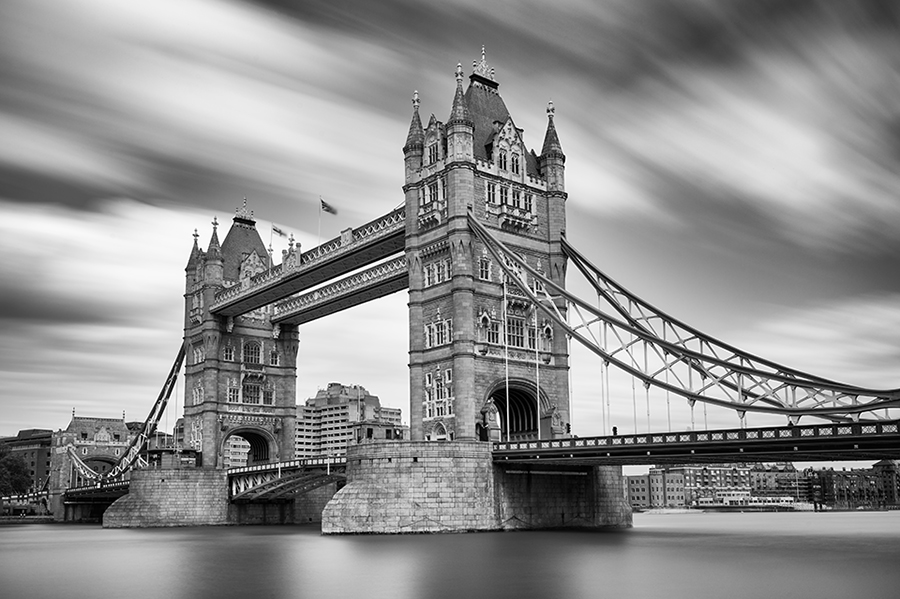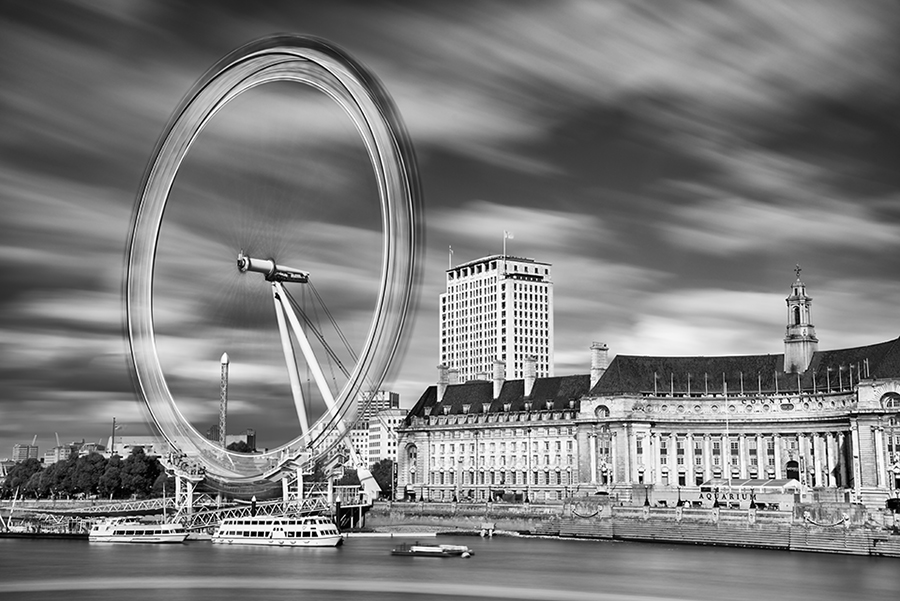One of the fascinating aspects of photography is the ability to convey the passage of time, or create a sense of motion though the art and technique of long exposure. There is a bit of a learning curve involved, however this technique lets the photographer to create beautiful fine art imagery. In the photo examples, I used a 10 stop neutral density stacked with an additional neutral density filter. There are several great 10 stop neutral density filters available, including the Singh-Ray Mor-Slow, and the Lee Big Stopper. It's a challenge to be able to find one in stock as 10 stop neutral density filters are very popular! The Mor-Slow and Big Stopper decrease the amount of light entering the camera by 10 stops, giving the photographer the opportunity to control the length of exposure for creative effects such as blurring water or clouds.
Using a 10 stop ND filter is like using an infrared filter, as the filter is too dark to easily see though to focus. To use the filter, compose, meter and a focus first, then mount the filter on the lens (and turn off autofocus). Close the eyepiece shutter, as you may end up with unwanted light leakage. If you have Live View, you'll be able to see enough detail to position a graduated ND at the horizon line. A 10 stop ND filter creates a silky blur with water and softens clouds for an artistic look through the extended exposure time. How much the clouds blur depends on how fast or slow they move during the exposure, but a cloudless day can produce interesting results as well.
You can also create a silky blur with water by shooting early morning or late evening, stopping down so that the exposure is long as possible. A polarizer can help with this, or a variable neutral density filter can extend the exposure time slightly. Anything goes compositionally, however the elements of sky and water fit together for a dramatic image. Exposure time can run into minutes. You'll need...
- Tripod, and cable release, bulb mode (Nikon MC-30, or similar)
- Neutral density filters
- Timer (stopwatch on the iPhone)
- Exposure calculator (free app, NDTimer Exposure Calculator)
- Close, or cover the eyepiece window
- Use Mirror Lock-up, lowest ISO
Meter for the exposure without the filter attached, focus and compose. Turn off autofocus. Calculate the exposure for the 10 stop ND filter based on the metered exposure. For example using a 10 stop neutral density filter with a metered exposure time of 1/125 equals 8 seconds with the filter attached. NDTimer Exposure Calculator is a handy app and it's free, below is a screenshot.
There may be a slight color cast with 10 stop ND filters, which is easy to tweak in post processing. Using a custom white balance, or dialing in a custom setting helps. I'm drawn to the traditional look of black and white long exposure imagery. Converting to black and white creates a fine art look that is very dramatic and allows the elements of long exposure to stand out beautifully.
Long exposures using neutral density filters can capture beautiful color in an image, and convey the passage of time for a surreal and compelling photograph. This gives the photographer a fascinating way to tell a unique story about a familiar subject. I'll be speaking at NFRCCC and NECCC about long exposure creativity, I hope to catch up with you at these events! ~ Deb




